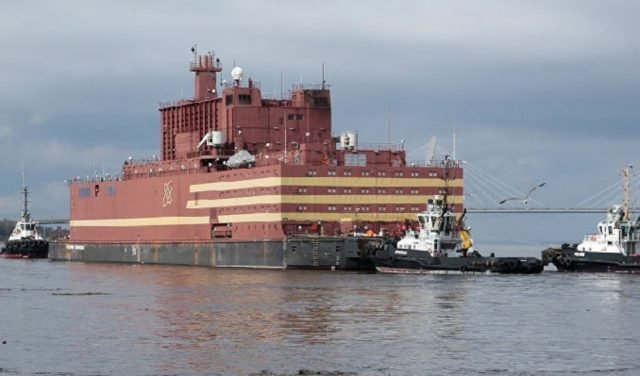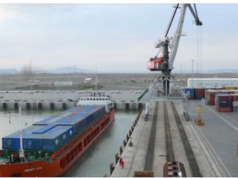Russia’s first floating nuclear power plant flipped the power switch on Thursday for the first time, delivering electricity from a boat off the coast of far eastern Russia, according to Forbes.
The barge, known as the Akademik Lomonosov, took 10 years to build at a cost of $232 million. The unit, with the electric generation capacity of roughly 70 megawatts, can power a city of 100,000 people. The barge is off the cold, rocky tundra of Chukotka along the North Pacific Ocean, a Russian state with a population of roughly 50,000. The ancestors of the Eskimos, Aleuts and the Chukchi all inhabited the region, now home to more polar bears, reindeer and puffin penguins than people.
Now it’s home to what Russia thinks may become a trend in fossil-free fuel—small, floating nuclear power plants.
The new power plant will replace the technologically obsolete Bilibino nuclear power plant in the region, built in 1974 with the capacity to generate 48 megawatts. And a coal-fired power plant will also be shut down. Bilibino will be closed before the end of this year.
Next year, the barge will be connected to the main city there, Pevek, in order to provide heat. The average high temperature there is -11 Fahrenheit in January and February. Fewer than 5,000 people live there.
The construction of Akademik Lomonosov barge began in 2008 at Russia’s Baltic Shipyard, where it was built by Rosatom subsidiary OKBM Afrikantov, a nuclear engineering firm. It consists of two KLT-40S nuclear fission ship reactors used in Russian nuclear-powered icebreakers.
© Content from this site must be hyperlinked when used.







